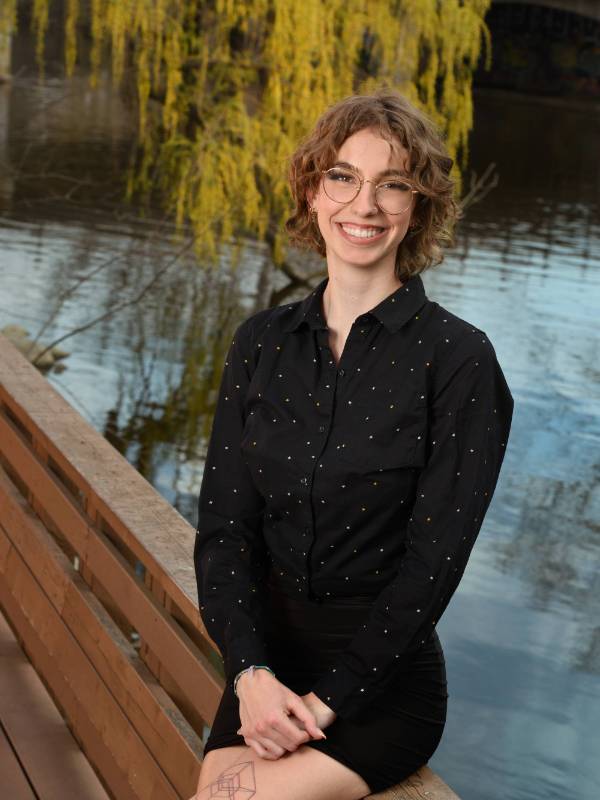Cesarine Graham: Bridging the Gap in Astrobiology with Mathematics

College of Natural Science
Dean's Research Scholar
My journey in the realm of research started shortly after my transition from Embry-Riddle Aeronautical University in Daytona Beach, FL, to Michigan State University (MSU). Upon arrival, I eagerly joined the lab of Dr. Matthew Schrenk, driven by the aspiration to contribute to the field of Astrobiology. My particular focus was on the integration of advanced mathematics into the domain of microbiology, which I believe was something that the field generally lacked.
Throughout my academic pursuit in Astrophysics, the gap in comprehension between exoplanetary research and microbiology research became largely apparent. A significant portion of exoplanetary studies have historically disregarded the intricate variables associated with biological lifeforms (except for the presence of water). Regardless of this, my research has given me a profound understanding of the intricacies of microbial life forms. It has become evident that the mere existence of water does not guarantee the presence of life; rather, it hinges on the delicate balance of factors such as temperature, pressure, pH levels, salinity, nutrient availability, and several other variables.
A pivotal moment in my academic journey occurred approximately a year into my research when I received an internship offer from Michigan State University in the field of Topology, a branch of mathematics that investigates the organization, structure, and connectivity of spaces. During this internship, I had the privilege of honing my mathematical and computational skills, which I quickly applied to enhance my Astrobiology research upon the conclusion of my internship. At this point, I decided to take a more computational approach to my research and create microbial habitability models. These models would enable a visual representation of the various parameters that determine the growth rate of several species of extremophiles, which are organisms that can survive and even thrive in extreme environments such as tardigrades.
In addition to my research endeavors, I have had the privilege of being a part of the Dean’s Research Scholars program, an amazing opportunity that Michigan State University has graciously extended to me. This academic pursuit has enriched my scholarly journey, providing invaluable experiences and collaborations that have further enriched my understanding of the scientific landscape.

College of Natural Science
As I move forward, I remain steadfast in my commitment to advancing our understanding of Astrobiology and its implications. I look forward to the ongoing pursuit of knowledge, collaboration, and innovation, all of which are integral to the scientific landscape that has fueled my passion and curiosity. In closing, I express my heartfelt gratitude to all who have supported and guided me along this remarkable journey, especially to Dean’s Research Scholars for this opportunity. I am eager to continue my exploration of the frontiers of science and contribute to the advancement of human knowledge.